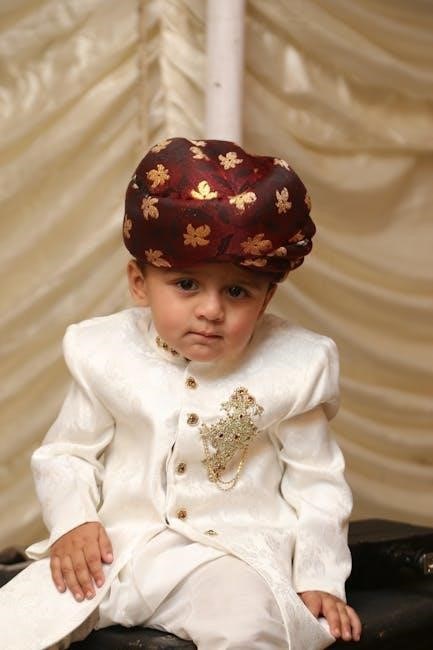
Maintaining the right body temperature is crucial for babies, as their bodies are still developing and more sensitive to heat and cold. Dressing them appropriately ensures comfort and health. This guide offers practical advice on selecting weather-suitable clothes, ensuring your baby stays cozy and safe.

1.1 The Importance of Thermal Regulation for Babies
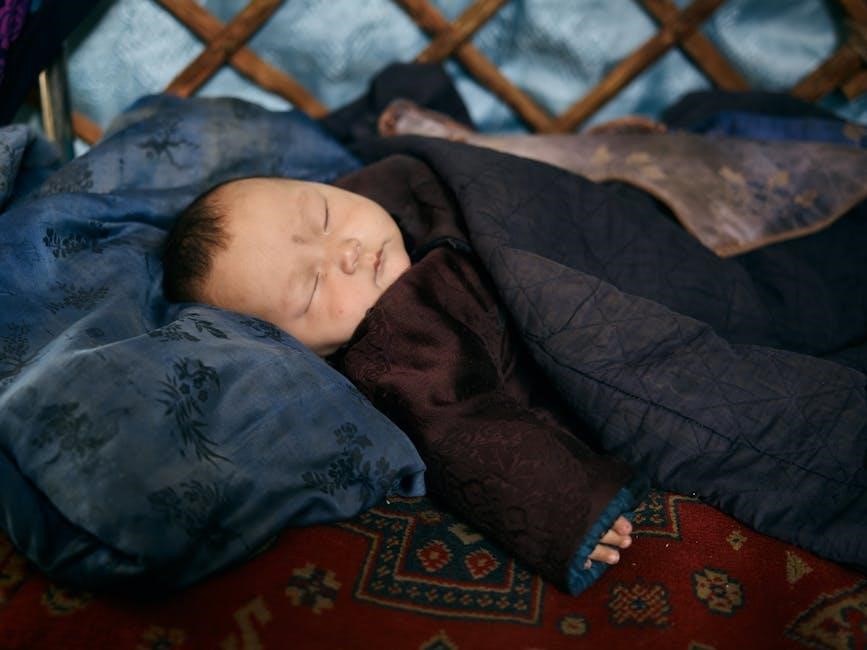
Thermal regulation is essential for babies, as their bodies are still mastering the ability to maintain a stable temperature. Unlike adults, infants have a larger surface area relative to their weight, which makes them lose heat more quickly. This vulnerability increases the risk of hypothermia in cold environments and overheating in warm conditions. Both scenarios can be dangerous and discomforting for a baby, potentially leading to health complications if not addressed promptly.
Proper thermal regulation ensures that a baby’s core temperature remains within a healthy range, promoting overall well-being and energy efficiency. Overheating can cause distress, while excessive cold can drain their energy reserves, affecting growth and development. Parents must pay close attention to their baby’s comfort, as infants cannot communicate their needs directly.
Understanding how to balance layers, fabrics, and environmental conditions is key to maintaining optimal thermal regulation. This knowledge helps parents dress their babies appropriately, preventing risks and ensuring their little ones stay comfortable and healthy in any weather. By prioritizing thermal regulation, parents can create a safer and more nurturing environment for their child.
1.2 How Baby Clothing Affects Body Temperature
Baby clothing plays a critical role in maintaining a baby’s body temperature, as it acts as a barrier against environmental conditions. The right fabrics and layers help regulate heat, ensuring the baby stays warm in cold weather and cool in warm weather. Thicker, insulating materials like wool or fleece are ideal for colder climates, while lightweight, breathable fabrics such as cotton are better suited for warmer environments.
The number of layers is equally important. In colder weather, dressing babies in multiple layers—such as a base layer, an insulating layer, and a waterproof outer layer—helps trap warm air and prevent heat loss. In warmer weather, fewer, lightweight layers are sufficient to avoid overheating.
Overdressing can lead to overheating, which can cause discomfort and increase the risk of heat-related issues. Conversely, underdressing leaves babies vulnerable to cold, potentially leading to hypothermia. Parents must carefully balance clothing choices to match the environment, ensuring their baby’s comfort and safety. By selecting the right fabrics and layers, parents can effectively manage their baby’s body temperature in any weather.
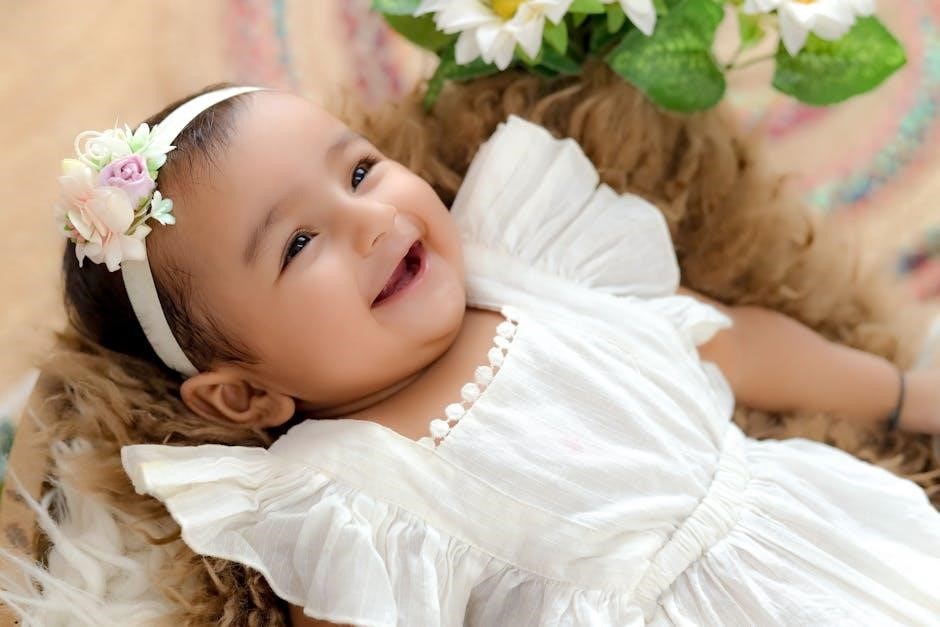
Understanding Baby’s Needs in Different Temperatures
Babies need clothing tailored to specific temperature ranges to stay comfortable. In colder environments, layers help retain warmth, while lightweight fabrics are essential in warmer conditions. Monitoring your baby’s comfort and adjusting clothing ensures their thermal balance and overall well-being.
2.1 Layering Clothing for Optimal Temperature Control
Layering clothing is a practical approach to maintaining your baby’s comfort across varying temperatures. It allows you to adjust their attire easily as conditions change, ensuring they stay neither too hot nor too cold. A typical layering system includes three main components: a base layer, a mid-layer, and an outer layer. The base layer, often a lightweight, breathable material like cotton or merino wool, helps regulate body temperature and absorbs moisture. The mid-layer, such as a sweater or fleece, provides insulation without being overly heavy. Finally, the outer layer, like a waterproof jacket or snowsuit, protects against wind, rain, or cold air.
When layering, consider the activity level and environment. For instance, indoor settings may require fewer layers, while outdoor adventures demand more protection. Always check for signs of discomfort, such as sweating or shivering, and adjust clothing accordingly. Using natural fabrics that breathe and wick moisture is key to preventing overheating or chilling. Additionally, ensure layers are not too tight, as this can restrict movement and cause distress. By mastering the art of layering, you can keep your baby comfortable and adaptable to different temperature conditions.
2.2 Choosing the Right Fabrics for Various Weather Conditions
Selecting the appropriate fabrics for your baby’s clothing is essential for maintaining their comfort in different weather conditions. For summer, lightweight, breathable fabrics like cotton, linen, and bamboo are ideal. These materials allow air circulation, preventing overheating and moisture buildup. In cold weather, opt for insulating fabrics such as wool or fleece, which trap warmth without causing discomfort. For spring and fall, versatile fabrics like merino wool or cotton blends work well, as they regulate temperature and adapt to changing conditions.
When choosing fabrics, consider their breathability and moisture-wicking properties. Avoid synthetic materials that trap heat and moisture, as they can lead to overheating. Natural fibers are generally better for temperature regulation. Additionally, texture plays a role; softer fabrics like organic cotton or silk are gentle on sensitive skin. Always check for fabric thickness and weight to ensure they suit the season. By pairing the right fabric with the weather, you can keep your baby comfortable and protected year-round.
2.3 Age-Specific Clothing Requirements
Choosing clothing for babies requires consideration of their age, as their needs evolve rapidly. Newborns (0-3 months) need soft, breathable fabrics like cotton or merino wool to maintain body heat. They should be dressed in layers, such as a onesie, a light sweater, and a sleep sack, to avoid overheating. For infants (3-6 months), clothing should allow for ease of movement as they begin to roll and crawl. Footed rompers and stretchable fabrics like bamboo are ideal. As babies grow, their activity levels increase, so clothing must accommodate this without restricting mobility.
For babies aged 6-12 months, focus on durable, comfortable fabrics that withstand crawling and exploration. Lightweight materials for warm weather and thicker layers for cold weather are essential. Toddlers (1-2 years) require clothing that promotes freedom of movement while keeping them comfortable. Avoid overly bulky fabrics that may restrict their active play. Regardless of age, prioritize natural, soft fabrics that regulate temperature and protect sensitive skin. Always dress your baby according to their activity level and the season to ensure comfort and safety.
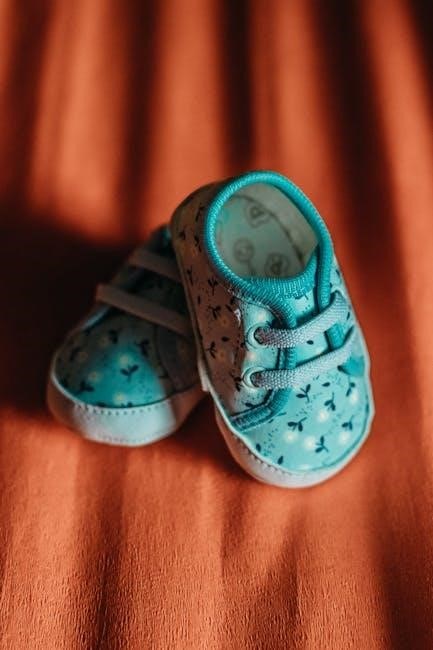
General Temperature Guide for Dressing Babies
Dressing babies according to temperature is essential for their comfort and health. Use lightweight, breathable fabrics in warm weather and layered, insulating materials in colder conditions. Always monitor your baby’s comfort and adjust clothing to prevent overheating or chilling.
3.1 Cold Weather (Below 50°F or 10°C)
Dressing your baby for cold weather requires careful layering to maintain body heat while avoiding overheating. Start with a snug, moisture-wicking base layer, such as a merino wool or thermal bodysuit, to keep skin dry and warm. Add a mid-layer of insulating fabric like fleece or cotton for extra warmth. Finally, use a waterproof and breathable outer layer, such as a snowsuit or parka, to protect against wind and moisture.
Accessories are equally important: choose a warm hat to prevent heat loss, and opt for soft, thick socks or booties. Mittens or gloves can be used, but ensure they are not too tight. Consider layering with a cozy blanket or sleeping bag specifically designed for cold weather when your baby is in a stroller or crib.
Health considerations are crucial in cold weather. Monitor your baby for signs of hypothermia, such as pale or cool skin, shivering, or lethargy. If you notice these symptoms, seek warmth immediately and consult a healthcare professional. Avoid overbundling, as it can lead to overheating and discomfort; Always check your baby’s temperature tolerance and adjust clothing accordingly to ensure their comfort and safety.
3.2 Moderate Weather (50°F to 65°F or 10°C to 18°C)
In moderate weather, dressing your baby in layers is key to maintaining comfort. Start with a breathable base layer, such as a cotton bodysuit, to regulate body temperature. Add a lightweight mid-layer like a sweater or cardigan made from natural fabrics such as cotton or merino wool, which allow for airflow and moisture-wicking properties. A light jacket or hoodie can serve as an outer layer for cooler moments or breezy conditions.
Accessories like a soft hat and lightweight socks are essential, but avoid over-accessorizing. Opt for lightweight, breathable fabrics throughout to prevent overheating. Monitor your baby’s comfort by checking for signs of warmth or coolness. If indoors, adjust layers based on the room temperature to ensure your baby remains comfortable. For outdoor outings, consider adding a lightweight blanket or wrap for extra protection without causing discomfort.
Remember, moderation is key in this temperature range. Avoid heavy or thick materials that can trap heat and cause discomfort. Instead, focus on versatile, breathable clothing that allows your baby to adjust naturally to the environment. This approach ensures your baby stays cozy and content in moderate weather conditions.
3.3 Warm Weather (65°F to 85°F or 18°C to 30°C)
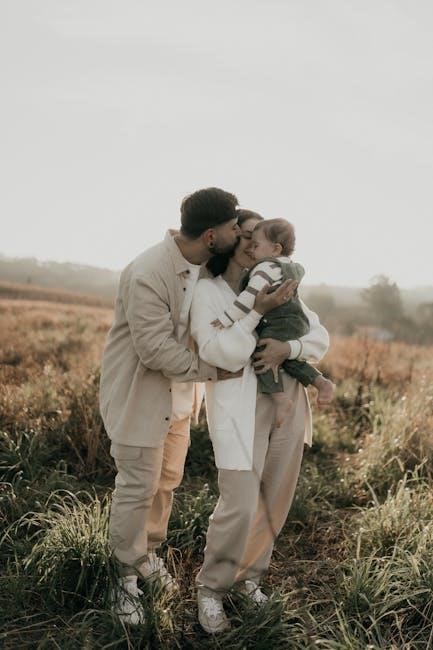
In warm weather, your baby’s clothing should prioritize breathability and lightweight materials to prevent overheating. Opt for natural fabrics like cotton, linen, or bamboo, which allow airflow and moisture-wicking properties. Avoid synthetic fibers that trap heat and moisture.
A simple onesie or lightweight romper is an excellent base layer. For added protection from the sun, choose clothing with built-in UPF protection or pair with a wide-brimmed hat and sunscreen. Loose-fitting clothes are ideal as they promote airflow and comfort. Avoid heavy or layered outfits, as they can cause your baby to overheat.
For outdoor activities, a cotton dress or lightweight pants and a t-shirt are perfect. Ensure your baby’s feet are protected with breathable shoes or sandals. If indoors, adjust layers based on air conditioning or room temperature to maintain comfort. Always monitor your baby’s cues, such as sweating or fussiness, to ensure they are not too warm.
Remember, the key is to keep your baby cool and comfortable without over-dressing. Lightweight, breathable fabrics and minimal layers are the best approach for warm weather conditions; This ensures your baby stays happy and safe in higher temperatures.
3.4 Hot Weather (Above 85°F or 30°C)
In extremely hot weather, your baby’s comfort and safety are paramount. Dress your baby in lightweight, breathable fabrics like cotton, linen, or bamboo to help regulate body temperature. Avoid synthetic materials that trap heat and moisture, as they can lead to overheating.
Opt for loose-fitting, single-layer clothing such as onesies, lightweight rompers, or simple t-shirts and shorts. These allow maximum airflow and help prevent heat buildup. A wide-brimmed hat and sunscreen are essential for outdoor protection, while sandals or lightweight shoes keep feet cool.
Stay hydrated by offering frequent feedings or water (for babies over 6 months). If indoors, ensure good ventilation or use air conditioning to maintain a comfortable environment. Avoid heavy clothing or blankets, as they can trap heat;
Monitor your baby for signs of overheating, such as sweating, flushed skin, or irritability. If your baby shows these signs, remove excess layers and provide a cooler environment. Always prioritize lightweight, breathable fabrics to keep your baby cool and comfortable in hot weather.
By dressing your baby appropriately and staying attentive to their needs, you can help them stay safe and comfortable in extreme heat.
Seasonal Dressing Tips for Babies
Dress your baby according to seasonal changes, ensuring comfort and safety. Layer clothing for colder months, use breathable fabrics in summer, and adjust layers as temperatures fluctuate. Always monitor your baby’s comfort and adjust clothing to prevent overheating or chilling.
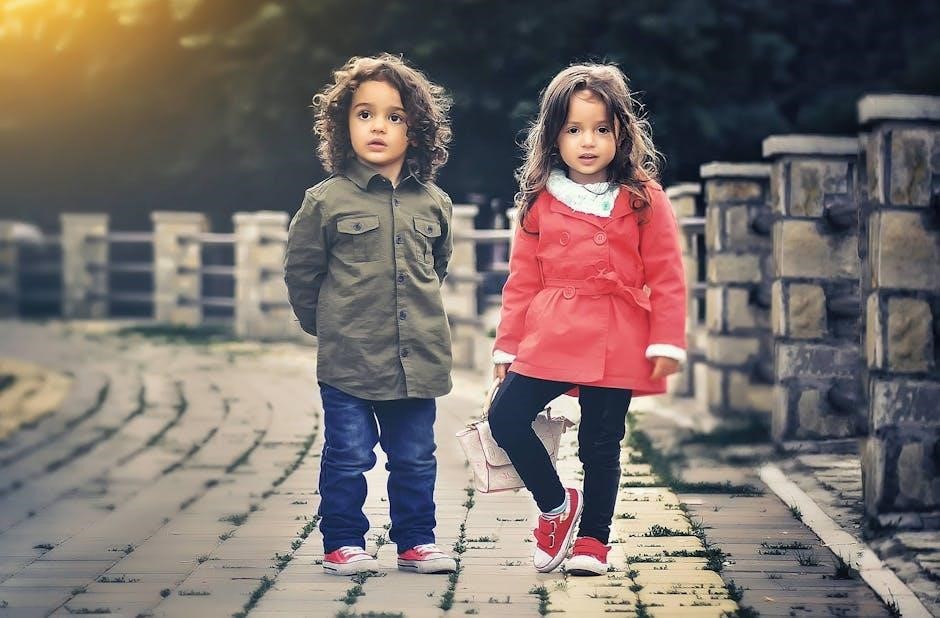
4.1 Winter Dressing: Keeping Babies Warm
Dressing your baby for winter requires careful attention to layering to maintain warmth without overheating. Start with a base layer of breathable, moisture-wicking fabrics like merino wool or soft cotton to keep skin dry. Add insulating layers such as fleece or wool sweaters to trap warmth. Finally, use a waterproof and windproof outer layer, like a snowsuit or jacket, to protect against harsh weather conditions.
Always cover your baby’s head, hands, and feet, as these areas lose heat quickly. Opt for hats, mittens, and warm socks made from natural fibers. Avoid overbundling, as this can lead to sweating and discomfort. Instead, aim for breathable layers that allow moisture to escape while retaining warmth.
When indoors, adjust clothing according to room temperature. Remove outer layers to prevent overheating, which can be harmful. Monitor your baby’s comfort by checking for signs of warmth, such as the back of their neck feeling slightly sweaty but not cold. Ensure they have enough freedom of movement to prevent restriction. By following these tips, you can keep your baby cozy and safe during the colder months.
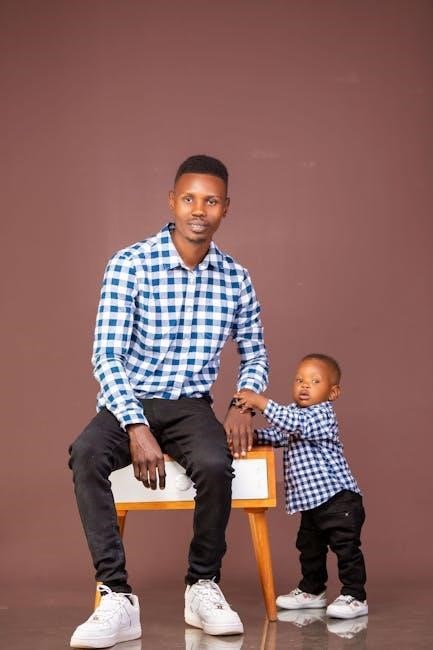
4.2 Spring and Fall Dressing: Balancing Layers
Dressing your baby for spring and fall requires a focus on layering to adapt to fluctuating temperatures. These seasons often bring mild mornings, cooler evenings, and unpredictable weather, making versatility key. Start with a breathable base layer, such as a cotton onesie, to regulate body temperature. Add a lightweight insulating layer like a fleece jacket or sweater for warmth during cooler moments. Finally, use a water-resistant outer layer, such as a lightweight raincoat or windbreaker, to protect against rain or wind.
Pay attention to your baby’s environment and adjust layers accordingly. Indoors, remove heavier layers to prevent overheating, while outdoors, ensure they have enough coverage without being overly bundled. Accessories like lightweight hats, scarves, and socks can provide extra warmth without restricting movement. Avoid overcomplicating outfits, as this can lead to discomfort. Instead, focus on breathable, natural fabrics that allow for airflow and moisture wicking.
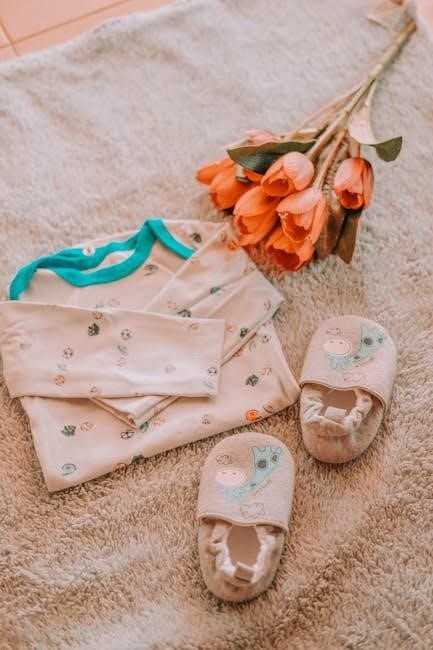
Monitor your baby’s cues, such as fussiness or flushed cheeks, to ensure they are comfortable. By balancing layers and using adaptable clothing, you can keep your baby cozy and prepared for the changing conditions of spring and fall. This approach ensures their safety and comfort throughout the day.
4.3 Summer Dressing: Lightweight and Breathable Fabrics
Summer dressing for babies focuses on keeping them cool and comfortable in warmer temperatures. Lightweight and breathable fabrics are essential to prevent overheating and ensure proper airflow. Opt for natural fabrics like cotton, linen, or bamboo, which absorb moisture and allow skin to breathe. Avoid heavy or synthetic materials that can trap heat and cause discomfort.
Simple, loose-fitting clothing is ideal for summer. Onesies, sundresses, and lightweight pants are great options. Look for garments with built-in UPF protection to safeguard your baby’s sensitive skin from the sun. Hats with wide brims and lightweight blankets for shade can also be useful outdoors. Avoid overlayering, as this can lead to overheating, especially in direct sunlight or humid conditions.
When indoors, keep your baby in minimal clothing to maintain a comfortable body temperature. Use fans or air conditioning to create a cooler environment, but ensure it’s not too chilly. Always monitor your baby’s comfort, checking for signs of overheating, such as sweating or flushed skin. By choosing the right fabrics and keeping outfits simple, you can help your baby stay cool and content during the summer months.
- Choose natural, breathable fabrics like cotton or linen.
- Opt for loose-fitting, lightweight clothing.
- Consider UPF-protected garments for outdoor use.
- Monitor for signs of overheating and adjust clothing as needed.
Health Considerations and Safety
Maintaining your baby’s thermal balance is vital for their health. Overheating and hypothermia are risks if clothing is inappropriate. Monitor for signs of discomfort, sweating, or flushed skin. Dressing in layers and using breathable fabrics helps regulate body temperature safely and effectively.
5.1 Avoiding Overheating: Signs and Prevention
Overheating in babies can lead to discomfort and potential health risks. Signs of overheating include sweating, a flushed face, and rapid breathing. To prevent this, dress your baby in lightweight, breathable fabrics like cotton, and avoid excessive layering. Ensure clothing fits properly, allowing for airflow to regulate body temperature naturally. In warm environments, opt for single layers of lightweight garments. Monitor your baby’s comfort by checking for moisture or overheating signs. Hats and blankets should be removed indoors to prevent excessive heat retention. Avoid synthetic materials that trap heat. Regularly inspect your baby’s clothing for excess warmth and adjust layers as needed. Overheating can lead to irritability and restlessness, so staying vigilant is key to maintaining their well-being. By choosing the right fabrics and monitoring their environment, you can help prevent overheating and keep your baby comfortable year-round.
5.2 Preventing Hypothermia in Babies
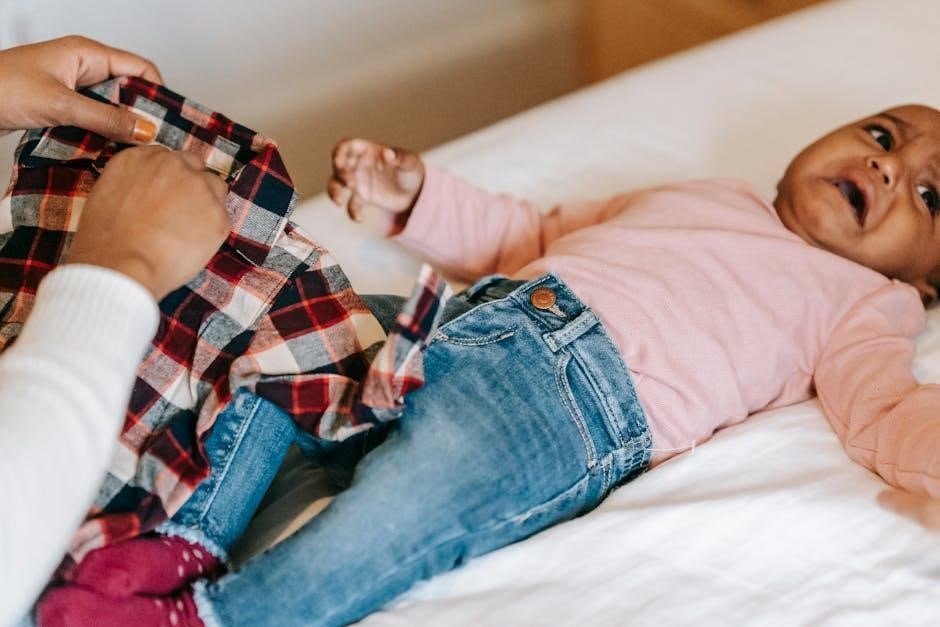
Hypothermia occurs when a baby’s core temperature drops below 95°F (35°C), posing serious health risks; Preventing this requires careful attention to their clothing and environment. Dressing in layers is essential, starting with a snug, breathable base layer like merino wool or cotton. Add insulating layers such as fleece or sweaters, and finish with a waterproof and windproof outer layer. Hats, gloves, and socks are crucial as extremities lose heat quickly. Ensure clothing fits well to avoid cold air gaps. In cold weather, use a cozy sleep sack or swaddle for bedtime. Monitor the room temperature, keeping it between 68°F and 72°F (20°C to 22°C). Avoid overbundling, as it can restrict movement and lead to discomfort. Check for signs of hypothermia, such as pale or cool skin, lethargy, or shivering. If detected, move your baby to a warm place and remove excess clothing to slowly rewarm them. Always prioritize high-quality, insulating fabrics and proper layering to keep your baby safe and warm. Regularly assess their environment and clothing to prevent heat loss and maintain optimal body temperature.
5.3 Monitoring Baby’s Comfort and Adjusting Clothing
Monitoring your baby’s comfort is essential to ensure their clothing meets their thermal needs. Check for signs of overheating, such as sweating, flushed skin, or restlessness, and for underheating, like pale or cool skin, shivering, or lethargy. Regularly feel their chest or back to gauge their warmth without touching extremities, which can be misleading. Adjust layers based on the environment and activity level. In cold weather, add insulating layers like fleece jackets or sweaters, and remove them as needed indoors. Use breathable fabrics that wick moisture away to prevent overheating. Ensure clothing allows for proper movement and isn’t restrictive. Check the room temperature, aiming for 68°F to 72°F (20°C to 22°C). For sleep, opt for a lightweight sleep sack or swaddle to maintain comfort without risking overheating. Adjust clothing seasonally, switching between lightweight fabrics in summer and thicker, insulating materials in winter. Pay attention to your baby’s cues, as they may not verbalize discomfort. By staying vigilant and making timely adjustments, you can ensure your baby remains comfortable and safe in any setting.
Dressing your baby appropriately according to the temperature is a vital aspect of ensuring their comfort and health. By understanding how clothing affects body temperature and following a temperature guide, parents can make informed decisions to keep their baby safe and cozy. Layering, choosing the right fabrics, and adjusting clothing based on the environment are key principles to follow. Remember, overheating and hypothermia are risks to be mindful of, so monitoring your baby’s comfort and adjusting their clothing accordingly is essential. Seasonal dressing tips and health considerations provide a comprehensive approach to selecting the right outfits for your baby. Always prioritize breathable, non-restrictive fabrics and be attentive to your baby’s cues. With these guidelines, you can create a safe and comfortable wardrobe for your baby, no matter the weather. By staying informed and proactive, you’ll ensure your baby thrives in every season.